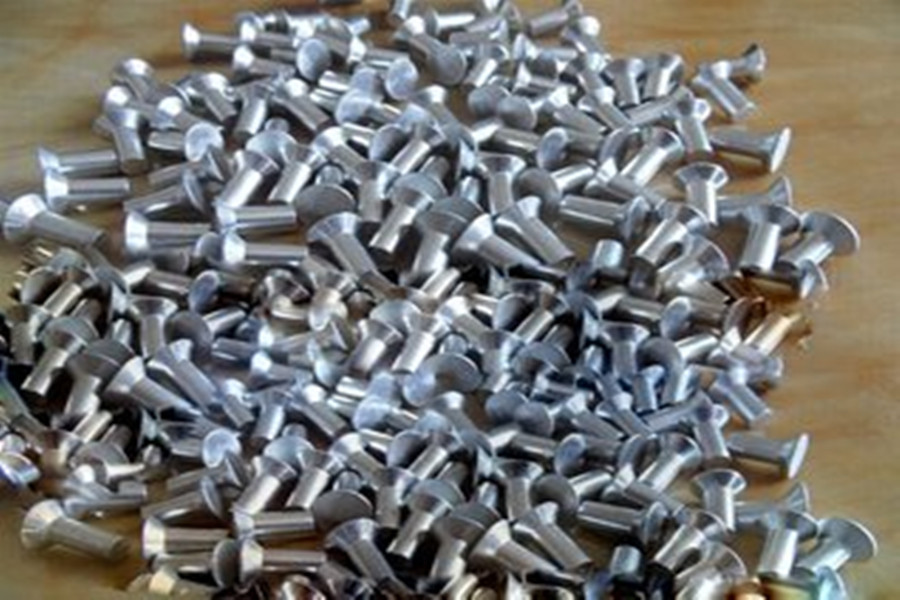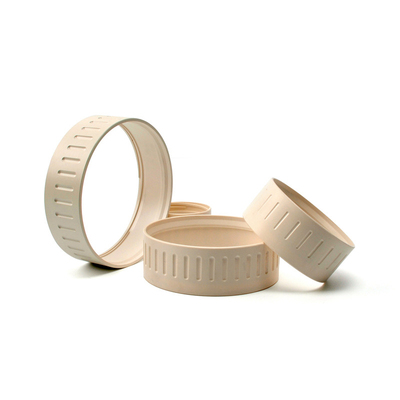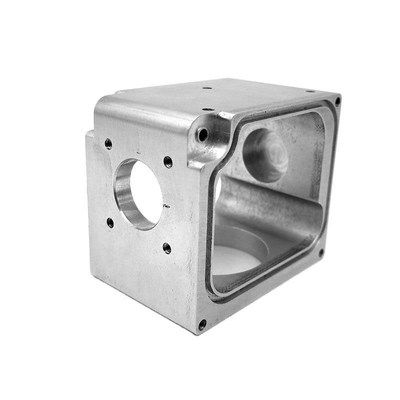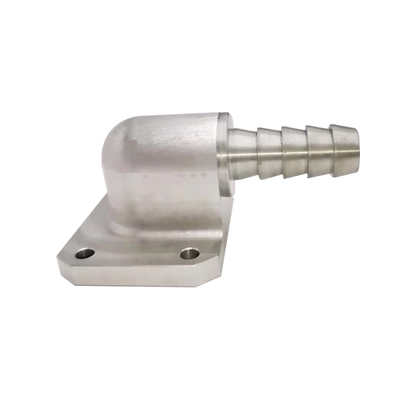Trade frictions affect short-term aluminum exports
The proportion of aluminum exports is relatively stable, concentrated in Vietnam and the United States
Affected by the export tax rebate policy, my country’s exports of aluminum products are mainly aluminum products, which can be specifically divided into unwrought aluminum, aluminum materials (including aluminum plates, aluminum strips, aluminum profiles, aluminum foils, etc., mainly semi-finished products), aluminum metal products and other. In 2017, my country exported 4.79 million tons of aluminum products, an increase of 4.5% year-on-year. Corresponding to the average export FOB price of US$2805.8/ton, the average premium to LME spot price is US$1,200/ton, and the average premium rate is 74%. In recent years, my country’s aluminum export volume has grown rapidly with the expansion of primary aluminum production capacity, and the growth trend is basically the same. In 2017, my country’s aluminum export volume was more than twice that of 2011, reaching 4.79 million tons, and the export value reached 13.9 billion. Dollar. Since 2012, aluminum exports have always accounted for 13%-15% of primary aluminum output, which is relatively stable.

my country's exports of aluminum mainly include aluminum strips, aluminum rods and aluminum foils. Among them, aluminum plates and strips account for about 40% of the total exports, aluminum rod profiles account for 30%, aluminum foil accounts for 25%, and the remaining varieties account for a total of 5%. From a historical point of view, this distribution ratio has basically remained stable, but since 2017, the proportion of aluminum plates and strips has increased to nearly 50%, and the share of aluminum profiles has been significantly reduced. The regional structure is concentrated, with the United States and Vietnam accounting for a relatively high proportion. The share of my country's export of aluminum in the international trade market has been increasing year by year, and currently exceeds 50%. In 2016, 18% of my country's aluminum products were exported to North America, 10% were exported to Europe, and 37% were exported to East Asia and Southeast Asia. In terms of different countries, the two main destinations for my country’s aluminum exports in 2016 were Vietnam and the United States, which accounted for 14.6% and 13.6% of total exports, respectively. The top 15 export countries accounted for 66% of total exports. The regional export structure is relatively concentrated.
From the perspective of the export structure of different products, the main destinations of various types of aluminum exports are different. From the perspective of 2016, the most important export destination of aluminum rod and rod profiles is Vietnam. In 2016, my country exported 510,000 tons of aluminum rod and rod profiles to Vietnam, which is 10 times the export volume of the second-place Philippines; the United States and South Korea are my country The main destinations for the export of aluminum sheet and strip, in 2016, my country exported 360,000 tons of aluminum sheet and strip to the United States and 110,000 tons to South Korea; the United States and India are the main destinations for my country’s aluminum foil export. In 2016, my country exported 168,000 tons of aluminum foil to the United States. It exported 127,000 tons to India. Overall, the export destinations of the three main types of aluminum materials are relatively concentrated.
Industry Determinants: Policy + Spread + Product
The overall export of aluminum and its products in my country can be divided into four historical stages: the initial stage before the global financial crisis in 2008 (before 2008), which was characterized by price fluctuations and a slow increase in export volume; and the rapid recovery stage after the financial crisis ( 2009-2010), the main feature is the rapid rise in prices accompanied by commodity prices, and the rapid growth of export volume; the steady expansion stage after the financial crisis (2011-2015), the main feature is the maintenance of stable prices, volume With the steady increase in aluminum demand; and the recent period of price decline and volume leveling (2016-present), entering 2017, the average export price of aluminum and its products in my country has accelerated and the export volume has been relatively stable. The reason is that in addition to macroeconomic trends and the supply and demand of bulk commodities, my country’s aluminum exports are mainly affected by policies, costs, product structure, and added value. Analyzing the changes in these three factors will help understand my country’s aluminum export market. Historical reasons and forecast future trends.
Affected by the export policy, my country's aluminum and its products are mainly exported from aluminum. In 2005, my country cancelled the 8% export tax rebate for unwrought aluminum and raised its export tariff to 15% in 2016. In 2008, in order to boost the confidence in aluminum exports, my country resumed the aluminum export tax rebate and raised its tax rate to 13%. It triggered the first round of rapid growth in the aluminum export market. From 2008 to 2009, the proportion of my country's aluminum exports rose significantly to 60%.
At present, almost all aluminum products in my country except aluminum foil enjoy a 13% export value-added tax rebate, and all aluminum foil products enjoy a 15% export value-added tax rebate, and no export duties are levied. Preferential export policy is one of the main factors supporting the growth of my country's aluminum exports for a long time. Given that the aluminum products industry is currently under destocking pressure, and the net profit of exports is within 10%, the export tax rebate is basically in a state of no profit after the abolition of the export tax rebate. It is expected that the tax rebate policy will continue in the short term. At the same time, as my country's most concentrated type of trade investigation and punishment, the export of aluminum products is greatly affected by overseas anti-dumping policies. Since 2015, the United States, Australia, India and other countries have significantly increased the frequency of launching trade investigations and penalizing Chinese aluminum products, and the types of products covered have become wider. Historically, when the U.S. made anti-dumping measures on aluminum profiles in China in 2011 and launched an investigation on aluminum foil trade with my country in 2017, China’s products accounted for more than 65% of the local import market share, which is important for my country’s aluminum exports to target countries in the short term. All have had a certain impact. Among them, anti-dumping in 2011 directly caused a 38% drop in the export volume of Chinese and American aluminum products. The export volume of my country's aluminum products keeps growing at the same time as the output of aluminum products. Since 2011, the monthly aluminum export volume and output ratio have fluctuated between 7% and 10%. The change is greatly affected by the domestic and foreign price differences, which in turn affects the relative price and market competitiveness of aluminum exports. The production cost of aluminum in my country is determined by the cost of primary aluminum and the cost of aluminum processing. In the past, processing costs were secondary and did not change much. Therefore, for some Chinese companies that have both upstream and downstream production capabilities, aluminum production costs are mainly determined by The production cost of primary aluminum is determined. In the past two years, the cost advantage has narrowed due to the continuous rise in domestic coal prices.
Product structure and added value have a decisive influence on the price stability of aluminum materials and the profitability of production enterprises. In the course of the devaluation of the renminbi, the price of aluminum has declined to a certain extent. In terms of varieties, the price range of various aluminum materials and their price change trends are different. By observing the premium of the RMB price of exported aluminum to the spot price of SHFE, it can be found that since 2017, the main reason for the decrease in the export price of aluminum is the rapid decline in the value of the product itself. The higher the added value of the product, the lower the price sensitivity and the fluctuation. The smaller. In terms of aluminum sheet and strip, from my country's export data to the United States, the added value of my country's direct export of aluminum sheet and strip is low. In 2016, the United States imported 38% of its total aluminum plate and strip imports from China. Among the top five countries in terms of import volume that year, the average CIF price of aluminum plate and strip imports from China was the lowest at only US$2,265/ton. The overall average CIF price of imported aluminum sheet and strip in the United States that year was US$2,730/ton, which was 18% lower. In 2016, the U.S. imported aluminum foil from China accounted for 66% of its total aluminum foil imports that year. Among the top five importing countries, China's aluminum foil price was low, only half of that of Canada and Austria. In terms of aluminum profiles, in 2016, the US directly imported aluminum profiles from my country only accounted for 3% of total imports, with an average price of US$4,794/ton, higher than the average of US$3,944/ton. However, considering that a large number of aluminum profiles exported from my country to Vietnam are re-exported to the US market, the average price of aluminum profiles imported by the United States from Vietnam is only US$2943/ton, which is US$1,000/ton lower than the average price. Although it is not certain that China The proportion of products, but it is certain that Chinese products are still in the low price area after re-export trade.
Japan is also one of the main destinations of my country's aluminum and its products. According to Japan's import data, in 2016, its imports of aluminum profiles and aluminum strips from China accounted for no more than 15% of the total imports that year. For these two items, Chinese products have obvious price advantages. More than 75% of Japan's imported aluminum foil comes from China, and the average customs price of imported Chinese aluminum foil is less than half of imported Korean products, which is only 1/7 of imported American products, which basically occupies the low-end market.
Anti-dumping efforts have intensified, short-term exports may be affected to a certain extent
In March 2018, US President Trump announced the implementation of a new steel and aluminum tax, planning to impose a 25% tariff on imported steel and a 10% tax on imported aluminum. Historically, in April 2011, the United States began to impose anti-dumping duties and countervailing duties on my country's imported aluminum profiles, and my country's output to American aluminum bars and rods basically stagnated. This measure also caused China's total exports of aluminum to the United States in 2011 to fall by 38% year-on-year compared to 2010. It was not until 2013 that my country's total exports of aluminum to the United States resumed growth. A series of recent measures aim to maintain the high pressure on my country's aluminum profiles. Since 2009, Western countries represented by the United States, the European Union and Australia have continuously launched anti-dumping and anti-subsidy investigations on aluminum products exported to my country, mainly targeting aluminum extrusions, aluminum wheels and other products. Since 2015, the number of countries participating in anti-dumping and anti-subsidy investigations on aluminum products in China has increased, and the types of products covered have also expanded. The main incidents include: In 2015, India initiated an anti-dumping investigation against Chinese aluminum foil, and made a final ruling in March 2017. It is recommended to impose a final ruling on the Chinese products involved in the case, and it is recommended to impose a levy of US$0.69-US$1.63 on Chinese products involved in the case. /Kg of anti-dumping duties. As of the end of 2016, India was my country's second largest exporter of aluminum foil, and aluminum foil exports to India accounted for 12% of my country's total aluminum foil exports that year. The implementation of anti-dumping duties will increase the final price of Chinese aluminum foil exported from India by 27% to 62%, which is expected to significantly weaken the current price advantage and market share of Chinese products.
The new US steel and aluminum tax policy maintains high pressure on China's aluminum profiles. In 2015, the U.S. ruled a 33.28% general dumping margin on my country’s aluminum profiles. At the end of 2016, it ruled that 9 companies involved in the case were subject to a high anti-dumping tax rate of 86.01%. In 2017, they also ruled that they would maintain their tariffs on China’s aluminum profiles during the review of industrial damage investigations. Current anti-dumping and countervailing measures. At the same time, since 2017, South Korea and Brazil have also joined the queue for anti-dumping investigations on Chinese aluminum products, and the product types have further covered aluminum pre-coated photosensitive plates, aluminum cookware, aluminum alloy wheels and other products. In August 2016, Australia initiated a double-reverse investigation on imports of Malaysian and Vietnamese aluminum materials. The preliminary ruling was made in October 2016, and the final ruling was made in June 2017. Among them, the investigation of EastAsia Aluminum Company, MienHua Precision Mechanical, etc. in Vietnam Chinese-funded enterprises have made different degrees of anti-dumping margin determinations, involving multiple types of products such as aluminum rod profiles, aluminum strips and aluminum foils, and the impact may be about 10,000 tons.
From a historical point of view, previous anti-dumping and countervailing policies have had a greater impact on my country’s export volume and share of target countries, with an average of more than 30%. In the short term, this round of anti-dumping efforts will increase the coverage of a wide range of areas and a large range of products. It is expected to affect about 360,000 tons of aluminum sheet and strip directly, including about 500,000 tons of re-export trade, and the amount involved is US$1.5 billion. It will have a certain negative impact on aluminum exports from 2018 to 2019. However, considering that the current global aluminum shortage is difficult to alleviate in the short term, and the direct downstream aluminum sheet and strip exports to the United States are mainly automotive sheets, which account for a relatively high proportion of total imports (over 40%), the impact of export volume and export value is expected to be relatively limited. .
Rising power costs + narrowing price gaps, low-end aluminum advantages decline
The production cost of aluminum in my country is determined by the cost of primary aluminum and the cost of aluminum processing. The processing cost is secondary and has little change. Therefore, for some Chinese companies that have both upstream and downstream production capabilities, the aluminum production cost is mainly Determined by the production cost of primary aluminum. However, my country's primary aluminum production cost has a structural disadvantage, and it is difficult to support low prices for a long time. Specifically, the production cost of primary aluminum in my country has the following characteristics. According to Bloomberg data, in 2017, the cost of using grid electricity for aluminum enterprises was on average 2700 yuan/ton (or US$400/ton) higher than that of self-provided electricity. The electricity cost of Chinese aluminum companies that use self-supplied electricity accounts for only 31% of their cash costs, while those that use grid electricity account for 5%. Correspondingly, aluminum companies that use self-supplied electricity have an average gross profit of 3,115 yuan/ton to produce primary aluminum in 2017, while companies that use grid electricity have almost no profit margins. Compared with other countries and regions in the world, the energy consumption per ton of electrolytic aluminum produced by Chinese aluminum enterprises is only 13,600 kilowatt-hours, which is the best level in the world, mainly due to the relatively new domestic production capacity. Electricity costs account for 35%-40% of the production cost of electrolytic aluminum. At present, 30% of China’s electrolytic aluminum is produced through grid power, and China’s aluminum companies that use grid power have the highest electricity costs in the world. Aluminum companies that use self-supplied electricity have a slight advantage over Europe and the United States on average, but are similar to those in the Middle East. The ratio still has a considerable gap. According to estimates by Rusal, the cost of grid electricity for Chinese aluminum companies to produce 1 ton of electrolytic aluminum is about US$900, accounting for 50% of the current LME price, while the cost in Canada and Gulf countries may be less than US$350. In addition, the previous price advantage of China's aluminum companies' self-provided electricity came from cheap coal. In 2016, driven by coal capacity reduction, coal prices rose sharply, which significantly pushed up the cost of raw materials for self-supported electricity. The increase in coal prices is expected to further push up the cost of electricity. Under the dual pressure of reducing coal production capacity and promoting environmental protection, rising energy costs will become a trend. At present, my country's electrolytic aluminum production has only two sources of electricity: hydropower and thermal power. The average on-grid price of hydropower is 0.2 yuan/kWh. Compared with the current self-provided thermal power price of 0.3 yuan/kWh, it has obvious advantages, but the proportion is relatively low. Is 10%. In other areas overseas, hydropower is the mainstream, with environmental protection, high efficiency and energy sustainability.
More than 90% of the alumina consumed in my country is self-produced, and less than 10% is imported. In the domestic market, there is little difference between the prices of local alumina and imported alumina. On average, the price of imported first-class alumina in Qingdao Port is only 100 yuan-200 yuan/ton higher than domestic first-class alumina. Comparing my country's domestic alumina price from 2010 to 2015 with the alumina sales price of major aluminum companies in the world, it can be found that the domestic alumina price is higher than the average alumina price of Alcoa and Rusal by US$60-US$100/ton. In terms of bauxite, currently 45% of my country’s bauxite is obtained through imports, but the average import price is only US$15/ton higher than the average price in the domestic market. It is roughly calculated based on the production of 1 ton of electrolytic aluminum for every 5 tons of bauxite, per ton. The raw material cost of electrolytic aluminum has increased by US$75/ton. Overall, China's aluminum production has economies of scale and has advantages in unit energy consumption, but rising energy prices and environmental pressures will further increase production costs. The aluminum companies in the Middle East and Canada can maintain their own cost stability and benefit from the weakening of the price advantage of Chinese products due to their cost structure advantages.
Due to rising energy costs, China's primary aluminum production cost advantage has weakened. In recent years, with the continuous increase of my country's primary aluminum production, the trend of changes in domestic and foreign aluminum prices has become more and more the same. In the long run, the price difference between SHFE and LME is difficult to maintain at a high level, and the window for large-scale export arbitrage is limited. Considering that both the decline in the exchange rate and the increase in energy costs will lead to a decline in the advantages of domestic exports of aluminum products, at an exchange rate of 6.5 and an energy cost increase of 10%, products with a processing fee of more than US$755/ton have reliable profitability and export advantages , High-end export products benefit first.
Link to this article: Trade frictions affect short-term aluminum exports
Reprint Statement: If there are no special instructions, all articles on this site are original. Please indicate the source for reprinting:https://www.cncmachiningptj.com
 PTJ® is a customized manufacturer that provides a full range of copper bars, brass parts and copper parts. Common manufacturing processes include blanking, embossing, coppersmithing, wire edm services, etching, forming and bending, upsetting, hot forging and pressing, perforating and punching, thread rolling and knurling, shearing, multi spindle machining, extrusion and metal forging and stamping. Applications include bus bars, electrical conductors, coaxial cables, waveguides, transistor components, microwave tubes, blank mold tubes, and powder metallurgy extrusion tanks.
PTJ® is a customized manufacturer that provides a full range of copper bars, brass parts and copper parts. Common manufacturing processes include blanking, embossing, coppersmithing, wire edm services, etching, forming and bending, upsetting, hot forging and pressing, perforating and punching, thread rolling and knurling, shearing, multi spindle machining, extrusion and metal forging and stamping. Applications include bus bars, electrical conductors, coaxial cables, waveguides, transistor components, microwave tubes, blank mold tubes, and powder metallurgy extrusion tanks.
Tell us a little about your project’s budget and expected delivery time. We will strategize with you to provide the most cost-effective services to help you reach your target,You are welcome to contact us directly ( [email protected] ) .

- 5 Axis Machining
- Cnc Milling
- Cnc Turning
- Machining Industries
- Machining Process
- Surface Treatment
- Metal Machining
- Plastic Machining
- Powder Metallurgy Mold
- Die Casting
- Parts Gallery
- Auto Metal Parts
- Machinery Parts
- LED Heatsink
- Building Parts
- Mobile Parts
- Medical Parts
- Electronic Parts
- Tailored Machining
- Bicycle Parts
- Aluminum Machining
- Titanium Machining
- Stainless Steel Machining
- Copper Machining
- Brass Machining
- Super Alloy Machining
- Peek Machining
- UHMW Machining
- Unilate Machining
- PA6 Machining
- PPS Machining
- Teflon Machining
- Inconel Machining
- Tool Steel Machining
- More Material





